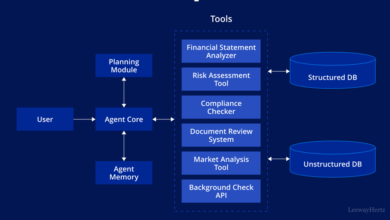Where to Focus When Building Your Brand

Building a brand is one of the most valuable yet complex pursuits a business can undertake. It demands time, consistency, and strategic foresight to shape how customers perceive your company and what your name represents in the market. A strong brand does more than generate recognition—it builds trust, loyalty, and differentiation in an increasingly crowded landscape. But with so many competing demands, business leaders often struggle to determine where their focus should lie. The key is to dedicate time to the areas that create the strongest foundation for long-term growth: identity, consistency, engagement, and visibility.
Defining Your Identity and Purpose
Every successful brand begins with clarity of purpose. Before a company can effectively promote itself, it must define who it is, what it stands for, and why it exists. This process extends far beyond logo design or color palette—it’s about articulating a brand identity that reflects the company’s values and speaks directly to its audience. Without this internal clarity, even the most well-funded campaigns will lack authenticity and direction.
When developing brand identity, focus on three core pillars: purpose, positioning, and promise. Purpose defines the deeper “why” behind your brand—what drives the organization beyond profit. Positioning establishes your place in the market, clarifying what makes you distinct from competitors. Promise communicates the consistent experience you intend to deliver to customers. When these elements align, your brand gains coherence and credibility, forming a story that employees and customers alike can believe in.
Building a strong brand identity also requires introspection and research. Listening to customers, studying competitors, and understanding industry dynamics will inform how you craft your message. Authenticity should always guide this process. Audiences are drawn to transparency and sincerity, and any dissonance between words and actions can erode trust. By dedicating time to defining a genuine, values-driven identity, you create the foundation upon which lasting reputation and recognition are built.
See also: The Best LED Headlight Brand and Bi-LED Lens Technology: A Comprehensive Guide
Creating Consistency and Credibility
Once identity is established, consistency becomes the next priority. A brand is remembered when it communicates the same message and tone across every interaction. Consistency reinforces recognition, builds trust, and gives customers confidence that they know what to expect. From website design and packaging to social media presence and customer service, every touchpoint should reflect a unified brand personality.
Many companies underestimate how easily inconsistency can weaken their brand. When visuals, voice, or messaging vary too widely, it can confuse customers and dilute the brand’s impact. Establishing clear brand guidelines—covering everything from typography to communication standards—ensures alignment across teams and channels. However, consistency does not mean rigidity. Brands must evolve with time and audience expectations while maintaining their core essence. This balance allows for adaptability without losing familiarity.
Credibility, the natural outcome of consistent behavior, must be earned through action. Delivering on promises, responding transparently to feedback, and maintaining quality over time are the hallmarks of trustworthy brands. Businesses that dedicate time to reinforcing credibility through reliable service and customer experience build equity that no marketing budget can buy.
The Role of Marketing and Strategic Visibility
No matter how strong your identity or consistent your message, brand growth depends on visibility. Strategic marketing ensures that your efforts reach the right audiences and create lasting impressions. To make the most of limited time and resources, focus on marketing activities that amplify your brand’s strengths and align with audience behaviors.
Working with an experienced advertising agency can accelerate this process by bringing expertise in market analysis, creative execution, and media strategy. A skilled agency can help craft campaigns that not only increase awareness but strengthen brand positioning across both digital and traditional channels. However, outsourcing should complement—not replace—your internal understanding of the brand. The most successful campaigns emerge when agencies work collaboratively with businesses that have a clear sense of their values and goals.
In addition to paid campaigns, organic visibility remains essential. Social media engagement, search engine optimization, and community participation all contribute to building familiarity. Brands should approach visibility as a long-term commitment rather than a short-term tactic, ensuring that marketing reinforces relationships rather than simply driving transactions.
Sustaining Growth Through Patience and Purpose
Building a memorable brand takes time, and patience is one of the most overlooked aspects of the process. Recognition and trust develop gradually through consistent effort, not quick wins. Businesses must dedicate time to nurturing reputation and refining strategy rather than chasing trends or short-term spikes in attention.
Ultimately, the most important investment you can make when building your brand is in purpose-driven consistency. By focusing your time on defining who you are, maintaining credibility, engaging authentically, and expanding visibility through thoughtful marketing, your brand will grow not just in recognition, but in meaning. The companies that succeed are those that understand that a brand is not a project to be completed—it is a relationship to be cultivated, strengthened, and sustained for years to come.





